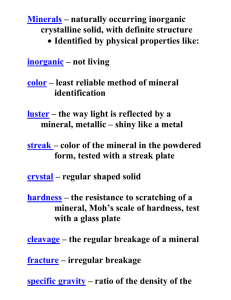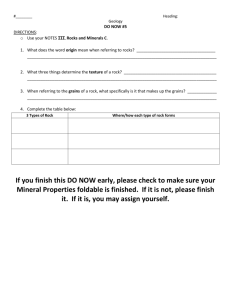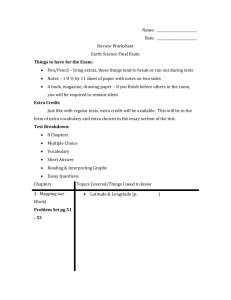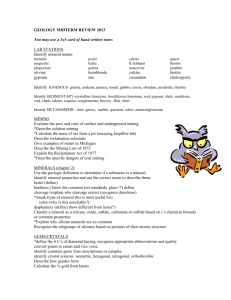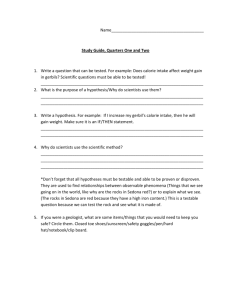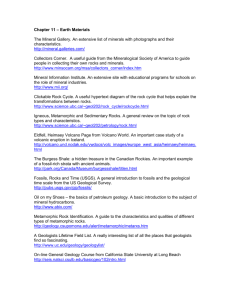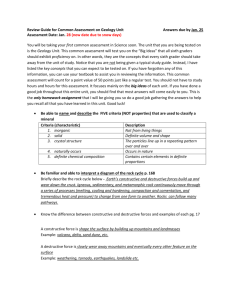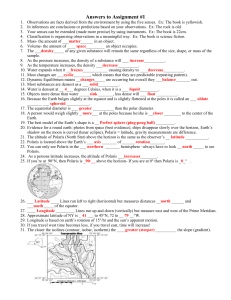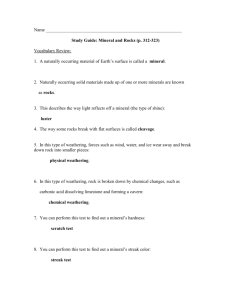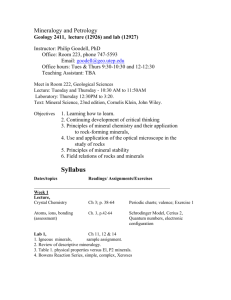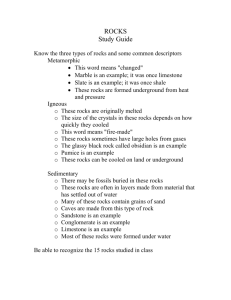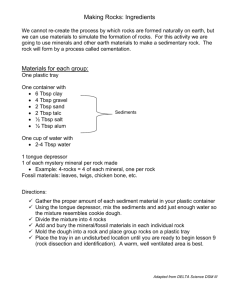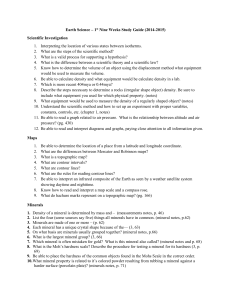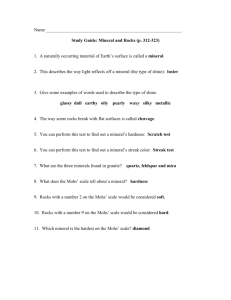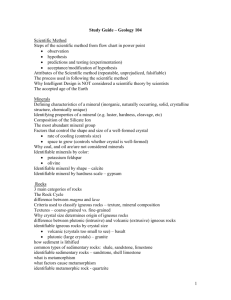semester exam review
advertisement
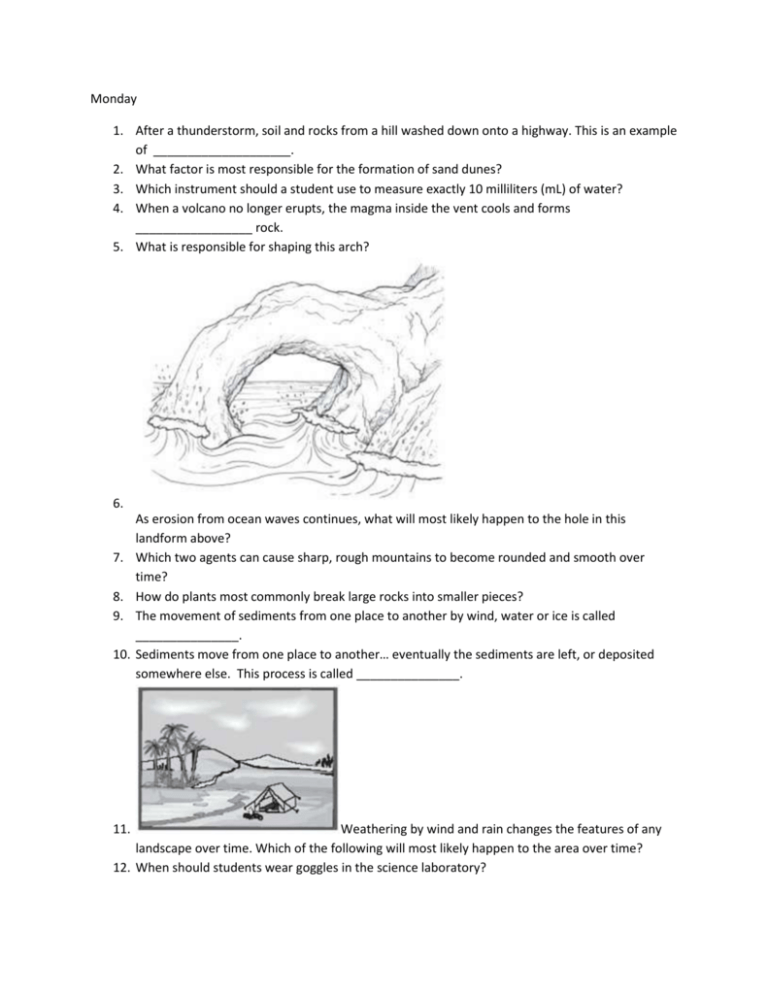
Monday 1. After a thunderstorm, soil and rocks from a hill washed down onto a highway. This is an example of ____________________. 2. What factor is most responsible for the formation of sand dunes? 3. Which instrument should a student use to measure exactly 10 milliliters (mL) of water? 4. When a volcano no longer erupts, the magma inside the vent cools and forms _________________ rock. 5. What is responsible for shaping this arch? 6. 7. 8. 9. 10. 11. As erosion from ocean waves continues, what will most likely happen to the hole in this landform above? Which two agents can cause sharp, rough mountains to become rounded and smooth over time? How do plants most commonly break large rocks into smaller pieces? The movement of sediments from one place to another by wind, water or ice is called _______________. Sediments move from one place to another… eventually the sediments are left, or deposited somewhere else. This process is called _______________. Weathering by wind and rain changes the features of any landscape over time. Which of the following will most likely happen to the area over time? 12. When should students wear goggles in the science laboratory? 13. 14. 15. 16. 17. 18. 19. 20. 21. 22. 23. Tuesday The process in which rocks are broken down into smaller and smaller pieces is called _______________. How do igneous rocks form? Granite that is subjected to heat and pressure is changed into gneiss. Therefore, gneiss is a ___________ rock. ________________is the shape of the land or the collection of landforms in a given area? ____________________ refers to a mineral's resistance to being scratched. Metallic and nonmetallic are descriptions of a mineral's _______________. A scientist will perform ______________ to test their hypotheses. A contour interval is ________________________________________________. What is the source of the organic matter needed for most fertile soils? Rocks that contain fragments of bones, shells, and plant remains are most likely ______________________ rocks. 13) Which process caused the changes shown below? 24. What is the difference between an intrusive & extrusive rock? Wednesday 25. Should you report all injuries, no matter how small, to your teacher immediately? 26. Which are the three rock types? 27. What are three AGENTS of erosion? 28. Which erosional agent most likely piled the silt against these buildings? 29. The color of the powered that a mineral leaves on a piece of white, unglazed porcelain is called the mineral’s_______________. 30. 31. 32. 33. 34. 35. 36. Which mineral property is being tested in the diagram above? How often does an extinct volcano erupt? You should tie back long hair and secure any loose clothing while in the lab. How was the Grand Canyon formed? What could cause a river to become wider? During labs, is it is okay for you to sniff a chemical directly? Name a land feature that is formed from erosion by waves. Thursday 37. Why would a bottle of water placed inside a freezer burst? 38. If an igneous rock is exposed to heat and pressure, which type of rock would be formed? 39. What kind of rock forms from material that settles on a lake bottom? 40. What causes large crystals to form in igneous rocks? 41. How can you determine if a mineral will scratch another mineral? 42. Which process is caused by the movement of Earth`s plates? 43. How do earthquakes occur? 44. What is a contour interval? 45. Earth is made of different layers that have varying characteristics. Which is Earth’s thickest layer? 46. What is a possible cause for the change? 47. Which process is responsible for destroying parts of monuments? 48. Which force is most responsible for carving the Mississippi River basin?

